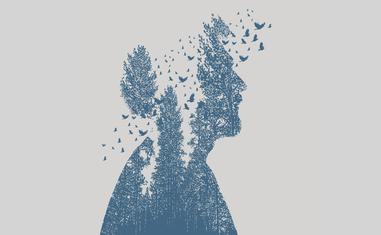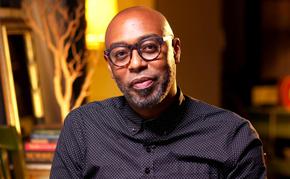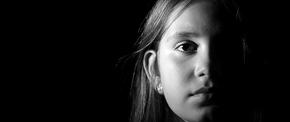The views expressed in our content reflect individual perspectives and do not represent the authoritative views of the Baha'i Faith.
Here’s a quick quiz: do these two categories of human characteristics seem gender-specific to you?
- Aggressive, assertive, ambitious, dominant, competitive, rational, risk-taking, unemotional, promiscuous, powerful.
- Affectionate, gentle, loyal, sensitive, yielding, intuitive, cheerful, understanding, sympathetic, kind, nurturing, caring.
These aren’t my terms – I compiled them from several different online lists of presumably masculine and feminine traits. You can guess which list is supposed to apply to each gender.
RELATED: What Does It Take to Be a Man Today?
But personally, as a man, if I had to choose between them, I’d rather have the character virtues on the second list. What about you – which set of traits would you pick?
In the past, boys didn’t have much choice. Their traditional masculine upbringing meant they had to choose the typically male list of traits. Trained that way by their fathers, grandfathers, and forefathers, who feared any deviance from the standard male roles as somehow less than befittingly masculine, boys were generally forced to adopt a dominating, stoic, hyper-masculine self identity.
But now, all over the world in the 21st Century, people have begun to re-think the definition of what makes a male a man; to reconsider why so many people think of women as weak and men as strong. For the first time, maybe ever, boys and men don’t automatically have to subscribe to the same old macho standard.
A hundred and fifty years ago, when the Baha’i Faith began, male and female roles had been prescribed and proscribed in most cultures for just about forever. Thousands of years of human history bore witness to the suppression of women and the empowerment of men. Males had rigidly-defined expectations, with little variation allowable. Any slight deviation from the norm branded you as strange and unacceptable.
But then one of the great bounties of this new era in human history dawned — the equality of the sexes.
Born in 19th century Persian society, where women were treated as chattel property, the Baha’i Faith boldly challenged the status quo by proclaiming that women and men have equal rights and are equal in the sight of the Creator. As Abdu’l-Baha wrote, “… another of the teachings of Baha’u’llah is the equality of men and women and their equal sharing in all rights.”
In the context of that core Baha’i principle, Baha’is have a unique view of the equality of gender roles and responsibilities. In fact, the Baha’i writings say that the traditional alpha-male character traits, exemplified by the initial list above, will ultimately give way to a more nuanced male role model – one that balances the normatively masculine traits with those perceived as feminine ones.
The scientific definition of a male – a person whose cell nuclei has an x and a y chromosome — has long been overshadowed by all kinds of stereotypical, freighted, culturally-bound notions of the parameters of manliness. War, violence and aggression usually meant male. Domesticity, nurturance and tenderness almost always meant female. Emotional openness and vulnerability were reserved for women. Competitive dominance, stoicism, and hard, cold rationality were reserved for men.
These antiquated definitions, thankfully, have finally started to change. We still have a long way to go, but we’ve certainly made progress since Baha’u’llah proclaimed the equality of the sexes in the mid-1800s, and since the Women’s Suffrage movement reached its peak a century ago, and since first, second, and third-wave feminism made their impacts on humanity. As women continue to become leaders in every sphere of society the old gender limitations have morphed into something completely new: an understanding that we’re all individuals; that we each have a combination of supposedly “male” and “female” character traits that define us; that every woman or man can direct their individual destiny no matter what their chromosomes.
These new roles have caused confusion and not a little backlash from those still firmly attached to the traditional gender stereotypes.
More and more, though, many men want to shed their old skin and grow into a new, more equitable and balanced one. While those men would like to free themselves from the constraints, boundaries, and barriers of the traditional male roles, who might serve as a role model for what a male can potentially become?
RELATED: Does Patriarchy Also Harm Men?
Addressing that question, the Baha’i Faith has a uniquely progressive message about gender equality, gender differences, and gender roles.
Not only do the Baha’i teachings themselves offer a new set of definitions for maleness; Baha’is also have an exemplar, an ideal role model, in Abdu’l-Baha, the son of Baha’u’llah, the prophet and founder of the Baha’i Faith.
Abdu’l-Baha led an astonishing and particularly groundbreaking life, and his remarkable example of how to be a human being guides every Baha’i, whether male or female. In 1947, writing a summary statement about the Baha’i Faith for a new United Nations, Shoghi Effendi described Abdu’l-Baha this way:
The authorized Interpreter and Exemplar of Baha’u’llah’s teachings was His eldest son Abdu’l-Baha (Servant of Baha) who was appointed by his Father as the Center to whom all Baha’is should turn for instruction and guidance. Abdu’l-Baha ever since his childhood was the closest companion of his Father, and shared all His sorrows and sufferings. He remained a prisoner until 1908, when the old regime in Turkey was overthrown and all religious and political prisoners throughout the empire were liberated. After that he continued to make his home in Palestine but undertook extensive teaching tours in Egypt, Europe and America, being ceaselessly engaged in explaining and exemplifying the principles of his Father’s Faith and in inspiring and directing the activities of his friends and followers throughout the world.
Abdu’l-Baha spent his entire life as an advocate for peace, and set a towering example of what a peace-loving life could be.
In the next article in this series, we’ll examine that Baha’i message and Abdu’l-Baha’s exemplary life from the perspective of maleness — of what truly defines a man.

















Comments
Sign in or create an account
Continue with Facebookor